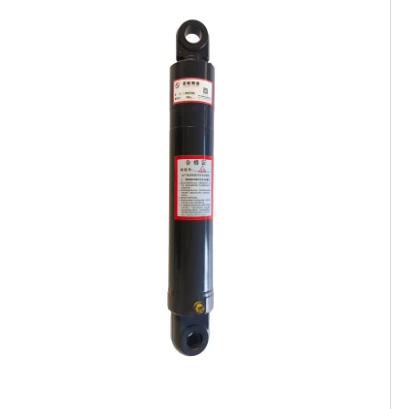Nov . 10, 2024 08:52 Back to list
Hydraulic and Pneumatic Cylinder Manufacturing Solutions for Efficient Industrial Automation
The Rise of Hydraulic and Pneumatic Cylinder Factories
In the realm of modern manufacturing, hydraulic and pneumatic cylinders play a pivotal role in the automation and mechanization of industrial processes. These powerful devices, which convert energy into mechanical motion, are integral in various applications, from assembly lines to heavy machinery. This article delves into the dynamics of hydraulic and pneumatic cylinder factories, exploring their significance, production technologies, and the future of these essential components.
Understanding Hydraulic and Pneumatic Cylinders
Hydraulic cylinders operate using pressurized fluid, harnessing the force of liquids to produce motion. They are known for their high power density and are commonly used in applications requiring significant force, such as construction equipment and automotive manufacturing. On the other hand, pneumatic cylinders rely on compressed air to create motion. While their force output is generally lower than that of hydraulic cylinders, they excel in speed and precision, making them ideal for packaging and assembly operations.
Both types of cylinders are vital in enhancing productivity by automating tasks that would otherwise require manual labor, thereby improving efficiency and safety in industrial environments.
The Manufacturing Process
The production of hydraulic and pneumatic cylinders involves a series of precise manufacturing steps. Initially, raw materials such as steel or aluminum are sourced based on the required specifications of the cylinders. These materials undergo machining processes like turning and milling to create the main components, including the cylinder barrel, piston, and end caps.
Advanced technologies such as Computer Numerical Control (CNC) machining are widely employed to ensure accuracy and consistency in the components. Following machining, the parts undergo surface treatments to enhance durability and corrosion resistance. This step is crucial since hydraulic cylinders, in particular, are often exposed to harsh environments.
Once the components are prepared, assembly lines come into play. Highly trained technicians carefully assemble the cylinders, integrating seals, valves, and other critical components. Quality control checks are vital throughout this process, ensuring that each cylinder meets rigorous industry standards before it leaves the factory.
hydraulic pneumatic cylinder factory

Technological Advancements in Cylinder Production
The landscape of hydraulic and pneumatic cylinder manufacturing is continually evolving, driven by technological advancements. Automation, for instance, has made production lines more efficient, reducing lead times and labor costs. Robotic arms are increasingly used in assembly processes, ensuring precision and consistency that human workers may not achieve.
Moreover, Industry 4.0 principles are finding their way into cylinder manufacturing. Factories are adopting Internet of Things (IoT) technologies that enable real-time monitoring of production processes. This connectivity allows manufacturers to optimize their operations, predict maintenance needs, and enhance overall productivity.
Future Trends and Sustainability
As industries strive for sustainability and lower carbon footprints, hydraulic and pneumatic cylinder manufacturers are also adapting to these changes. The shift towards more eco-friendly materials and production processes is gaining momentum. Innovations such as biodegradable seals and recyclable cylinder bodies are becoming more common.
Additionally, companies are now focusing on energy efficiency. For hydraulic systems, this could mean developing components that require less hydraulic fluid to operate effectively. In pneumatic systems, optimizing air consumption can significantly reduce energy use.
Conclusion
The factories producing hydraulic and pneumatic cylinders are at the heart of modern industrial innovation. With a focus on precision manufacturing, technological advancements, and sustainability, these factories are not only meeting the demands of today’s industries but also paving the way for a more efficient future. As global industries continue to evolve, the importance of hydraulic and pneumatic cylinders will only grow, solidifying their role as critical components in the machinery that drives progress. Through continuous improvement and adaptation, these factories will remain essential players in the ever-changing landscape of manufacturing.
-
1.5 Ton Flipping Oil Cylinder 70/82-40-217-720-Hebei Shenghan Hydraulic Machinery|Precision Hydraulic Cylinder,Custom Hydraulic Solutions
NewsAug.29,2025
-
1.5 Ton Flipping Oil Cylinder 70/82-40-217-720 | Hebei Shenghan Hydraulic Machinery Co., Ltd.
NewsAug.29,2025
-
High-Precision [90/105-50-180-480] Industrial Component | Durable & Reliable
NewsAug.27,2025
-
High-Performance Set of 50/60-45-290 471 | Durable & Reliable Components
NewsAug.26,2025
-
Efficient Pallet Truck Power Units - Reliable Hydraulic Systems
NewsAug.25,2025
-
Premium Set of 50/60-45-290 471 Parts | High Performance
NewsAug.24,2025
